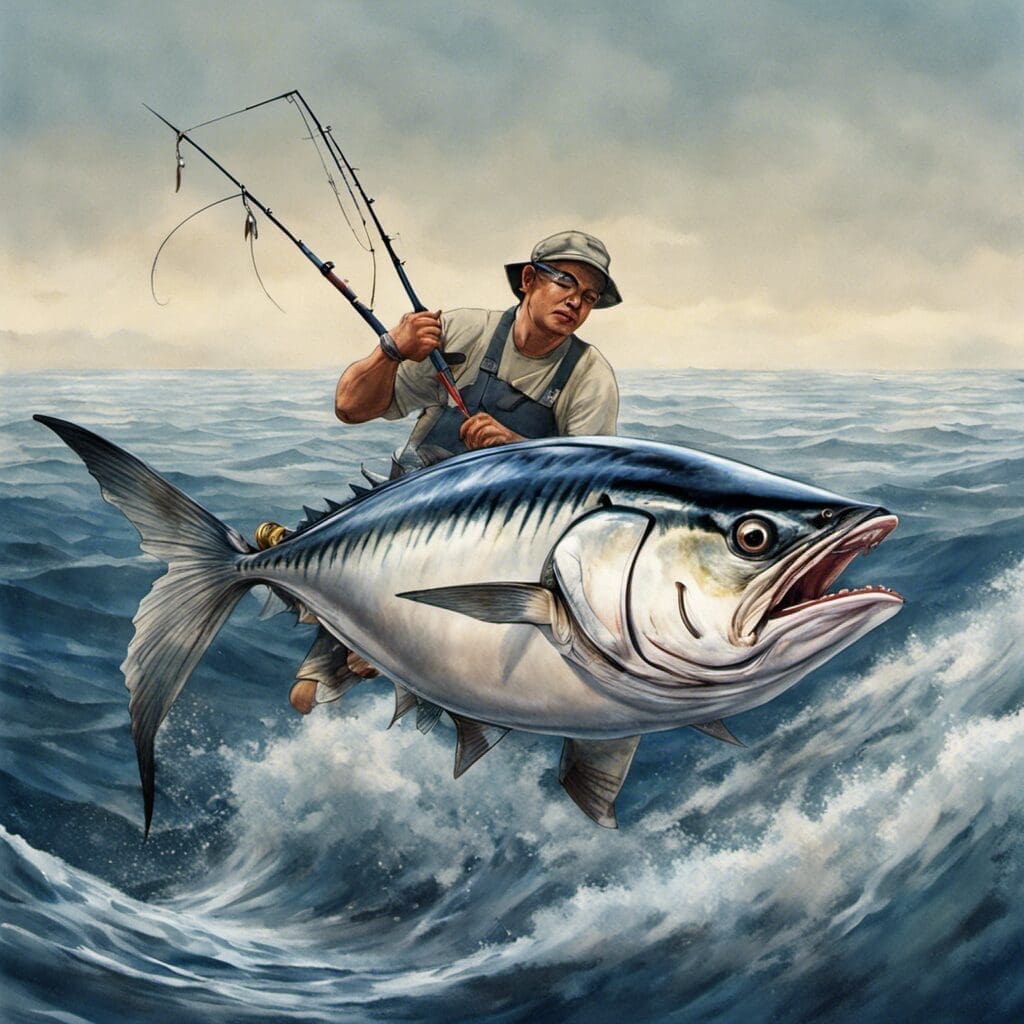Introduction
The Skipjack Tuna, scientifically known as Katsuwonus pelamis, is a popular and abundant species belonging to the mackerel family Scombridae.
Conservation Status
As of current estimates, the Skipjack Tuna is classified as ’Least Concern’ due to its wide distribution and large global population. Conservation efforts, albeit not as intensive as those for more threatened species, aim to maintain healthy population numbers through sustainable fishing practices.
Statistics
| Attribute | Average | Range |
|---|---|---|
| Length | 75cm | 35-110cm |
| Weight | 8.5kg | 1-34.5 kg |
| Average Lifespan | 8-12 years | N/A |
Distribution
Skipjack Tuna are a pelagic species, meaning they roam the open sea rather than sticking close to coastal regions. They are found worldwide, specifically in tropical and warm-temperate waters. Skipjack Tuna make wide-ranging migrations influenced by seasonal changes in sea surface temperature and prey distribution.
Habitats
Skipjack Tuna inhabit both saltwater and brackish waters, ranging in depth from the surface down to 260 meters. They prefer water temperatures between 15-30 degrees Celsius.
When and Where to See
These fish tend to stay nearer to the surface during warmer periods and migrate deeper during cooler months. During the day, they can range from the surface to about 260m in depth, while at night they prefer to stay around 50 to 75m deep.
Best Fishing Locations
Skipjack Tuna can be found worldwide especially in the waters surrounding:
- Kona, Hawaii
- The Gulf of Mexico
- The Mediterranean Sea
- The Coral Sea
- Tsugaru Strait, Japan
- The Andaman Sea, Myanmar
- Bahía Solano, Colombia
When fishing for Skipjack Tuna outside these areas, look for warm sea-surface temperatures and the presence of schools of small fish, which are their preferred prey.
How to Catch
Preferred baits and lures for catching Skipjack Tuna include small fish, squid and synthetic lures. Popular fishing techniques include trolling and chunking. The best season for fishing is generally from summer to early autumn, although this varies depending on region.
Identification Guide
Skipjack Tuna are deep-bodied and streamlined with a slim caudal peduncle. Dark purplish blue on top and silvery underneath, their most distinguishing feature is the presence of 4 to 6 very conspicuous longitudinal dark bands on their bellies.
Culinary
Skipjack Tuna is firm, dense and dark, with a high oil content and strong flavor. It is commonly used in canned tuna, makes great sashimi and sushi and is exceptional grilled. It is rich in Omega-3 fatty acids and an excellent source of Vitamin D, B12, selenium and iodine.
Additional Information
Skipjack Tunas are known to form schools with other types of tuna and even with dolphins. Aside from humans, their main predators include larger fish, sharks and seabirds. They feed on a variety of fish, squids, and crustaceans.
References and Further Reading
Further insights and details can be found across various publications and online resources. These include:
- Froese, R. and D. Pauly. Editors. (2020). FishBase. World Wide Web electronic publication. www.fishbase.org
- NOAA Fisheries. (2021). Skipjack Tuna. https://www.fisheries.noaa.gov/species/skipjack-tuna
- FAO Fisheries & Aquaculture – Species Fact Sheets. (2021). http://www.fao.org/fishery/species/2493/en

